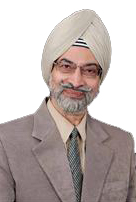For centuries, poets and writers have drawn parallels between the weather and mood. We all know how the weather affects what we wear, how we travel, what we choose to do, and how we feel.
When weather affects us to such an extent that we begin to have trouble functioning as usual, however, this can become more than just a case of the “winter blahs.”
Seasonal affective disorder, or SAD, is a type of clinical depression that usually starts with the shortening days of late autumn and lasts through the winter. Some people have a rarer form of SAD which is summer depression which begins in late spring or early summer.
Since the days of winter get shorter, SAD has been found to be more common in northern countries. In Canada, about 2 to 3% of the general population will experience SAD in their lifetime. Another 15% of Canadians will experience a milder form of SAD where they simply have the “winter blues.” SAD can be debilitating, preventing healthy people from functioning normally. It may affect their personal and professional lives and seriously limit their potential. Many people may be suffering unnecessarily—unaware that SAD exists or that help is available.
Symptoms:
- May be similar to depression making it difficult to diagnose. Even thyroid problem can look like SAD.
- Change in appetite. Often, the person gets cravings for sweet, starchy, or other carbohydrate-rich foods. This can result in overeating and weight gain.
- Often tired all the time, tend to oversleep, and can sometimes feel anxious and desolate.
- Suicidal thoughts.
Although SAD may affect some children and teenagers, it tends to begin in people over the age of 20. The risk of SAD decreases with age. SAD is more common in women than in men.
Research on SAD is still in its early stages. However, it is likely that SAD may be caused by a lack of daylight. Each of us has an internal “biological clock” that regulates our routines, a wake-sleep and active-inactive cyclical routine called a circadian rhythm. This biological clock responds to changes in season, partly because of the differences in the length of the day. For many thousands of years, the cycle of human life revolved around the daily cycle of light and dark. We were alert when the sun shone; we slept when our world was in darkness. The relatively recent introduction of electricity has relieved us of the need to be active mostly in the daylight hours. But our biological clocks may still be telling our bodies to sleep as the days shorten. This puts us out of step with our daily schedules, which no longer change according to the seasons.
One useful way to combat this is to use light therapy, also known as phototherapy. This can be done using a fluorescent light box, a device now available in a variety of safe, economical and portable designs. Although phototherapy can produce side effects, these are usually mild experiences of nausea, headaches, eye strains or feelings of edginess that go away after using the light box for some time. However, people with certain medical conditions or who are taking certain medications should have special eye examinations before considering light therapy. In addition to using SAD lamp lifestyle changes like exercise, relaxation, healthful diet, social supports, medical supports, and compliance to medications are helpful.
The following suggestions may help ease or even prevent SAD symptoms from becoming debilitating or be helpful by themselves for those of us with mild symptoms of the “winter blues”:
- spend more time outdoors during the day and try to arrange your environments (and schedules if you can) to maximize sunlight exposure
- keep curtains open during the day
- move furniture so that you sit near a window or, if you exercise indoors, set up your exercise equipment by a window
- install skylights and add lamps
- build physical activity into your lifestyle preferably before SAD symptoms take hold since physical activity relieves stress, builds energy and increases both your physical and mental well-being and resilience
- make a habit of taking a daily noon-hour walk
- when all else fails, try a winter vacation in sunny climates — if the pocketbook and work schedule allow — although keep in mind that the symptoms will recur after you return home. When back at home, work at resisting the carbohydrate and sleep cravings that come with SAD
- as for other kinds of clinical depression, for those more severely affected, antidepressant medication and/or short-term counselling (particularly cognitive-behavioural therapy) may also prove to be helpful.
Dr. Kala Singh did MBBS degree from Delhi University, India. He worked as Psychiatry specialist Doctor in Africa and Canada. He gives Sikh religious and spiritual counseling and psychotherapy to clients with stress, depression, anxiety and other mental health problems. For more information he can be contacted at 604-327-5253.












